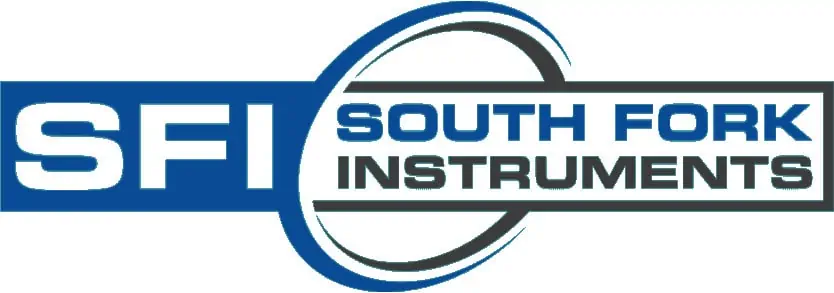Facilities that store or process petroleum products, lubricants, or fuel compounds must continuously monitor the risk of hydrocarbon contamination in stormwater, discharge points, and bunded areas.
Unaddressed oil releases can lead to downstream environmental harm, substantial regulatory fines, and costly remediation. These concerns have driven demand for purpose-built oil in water measurement solutions that combine speed, sensitivity, and deployment flexibility. Timely, localized oil in water detection has become a key requirement for risk management in sectors such as refining, aviation, power generation, and marine transport.
Remote Optical Watchers (ROW), developed by companies such as Laser Diagnostic Instruments (LDI), are designed to provide continuous, real-time oil on water detection using optical measurement techniques. These detectors are installed in high risk areas to notify operators of spill events, allowing them to provide rapid response for containment and clean up.
UV Fluorescence vs. Other Oil on Water Detection Methods
Several different optical techniques are employed for ROW detectors. Optical oil detection systems are often evaluated by their ability to distinguish hydrocarbon contaminants in real-world conditions, with UV-induced fluorescence demonstrating specific advantages over others. Methods that rely on surface reflectance or infrared absorption have well-documented limitations when applied to open water or industrial runoff channels.
Limitations of Reflectance and Infrared Techniques
- Laser and LiDAR reflectance: Performance degrades in the presence of surface turbulence, floating debris, or variable lighting. False positives can occur due to reflective non-oil substances.
- Infrared absorption: Sensitivity is typically lower for thin films, and readings may be skewed by changes in ambient lighting or background temperature.
Advantages of UV-Induced Fluorescence for Oil Detection
- Molecular targeting: Fluorescence detection is based on the intrinsic spectral response of hydrocarbon molecules, not surface properties.
- High sensitivity: ROW instruments can detect oil films down to 1 micron thickness.
- All-condition reliability: Detection performance is stable regardless of weather, water movement, or lighting conditions.
The ROW sensor uses pulsed UV LEDs to excite fluorescent compounds found in petroleum products. Emissions are captured and analyzed using proprietary software that suppresses background noise. This approach supports accurate detection across a wide range of substances—from diesel and lubricants to kerosene, aviation fuel, and crude oil.
Deployment
High risk areas are often remote and present specific challenges to successful deployment. ROW devices must have the flexibility to meet a whole range of conditions.
- Pipelines pass through open country where electrical power and signal connection availability are limited
- The environment around oil exploration and production installations in open ocean requires equipment built for harsh and corroding conditions.
- Open water in the form of lakes, rivers, and creeks can be in mountainous terrain
- Wastewater monitoring in sewer systems needs resilient and reliable performance upstream from treatment plants
- Aquaculture protection may require remote installation on buoys
- Installation on docks and in ports need to contend with continuous tidal water level changes
Tackling Installation Challenges
Material Durability for Field Conditions
ROW units must be designed to handle conditions in the field. Whether out in the open, in a building, or underground, ROW sensors must be constructed from materials that resist whatever they are exposed to. Aluminum is ideal for general purpose installations, while SS fits the bill for more corrosive and extreme locations.
Preventing False Readings from Fouling
ROW oil on water detectors are non-contact devices and mounted above the water surface to monitor for oil films. A common issue in operation is the fouling of the optical windows by marine growth or oil films as these can create false positives. ROW sensors with the ability to be mounted up to 10m above the water level can greatly mitigate such issues for remotely mounted units, significantly reducing maintenance requirements. The presence of oil is detected using photosensitive detectors.
Managing Light Interference
However, incident (natural) light may also be measured when in operation, so detectors must have the ability for adjustment to mitigate interference potential from sunshine and other sources.
Power Efficiency for Remote Deployment
The lower the power requirements of any remotely installed detector, the better. Being able to power a unit with a small solar battery pack greatly reduces the cost of installation. High power requirement units are not suitable for remote deployment.
Communication Flexibility
Units with a wide range of proven communication options are preferred. Whether simple discrete/analog outputs for connection into a local SCADA or standalone telemetry, detectors must have the necessary flexibility to relay measurement results seamlessly back to a central operations point.
Regulatory Compliance
Meeting the requirements of EPA/530/UST-90/009 is key to operating an acceptable oil on water detection system. Using compliant equipment provides confidence that the detection method meets regulatory standards and reduces exposure to extreme penalties in the event of an oil spill event.
Early Oil Spill Detection and Response Cost Reduction
ROW sensors are used to monitor effluent discharge points, bund wall drains, stormwater outfalls, and open-channel conveyance structures. Because the system detects the spectral fingerprint of oil directly on the water surface, alarms are triggered at the earliest detectable point in the spill timeline. This early-stage detection provides several advantages:
- Reduced volume of contaminated water requiring remediation
- Shorter response times, lowering labor and material costs
- Prevention of product loss or reputational damage from offsite release
- Support for compliance programs and environmental reporting
Continuous, autonomous monitoring reduces the need for manual sampling and laboratory confirmation, streamlining environmental oversight in facilities with multiple outfalls or seasonal stormwater events.
Case Studies: Oil in Water Detection at Airports, Refineries, and Terminals
Remote Optical Watchers are used in a wide range of settings, including airports, oil refineries, port terminals, power plants, fuel depots, and marine installations. The following case examples illustrate how ROW technology is applied to support environmental monitoring and incident prevention across varied conditions.
Airports
International and military airports have deployed Light Fraction ROW models (e.g., O-4501 series) near jet fuel storage areas and airside runoff channels. Guanacaste International Airport in Costa Rica and several European bases use these instruments to monitor rainwater and discharge points where kerosene and Jet A-1 fuel pose a release risk.
In these settings, ROW sensors have been installed in bunds and collector drains that feed into sensitive municipal wastewater systems. The ability to detect light oils at low concentrations ensures operational oversight without introducing delays.
Oil Refineries
At refinery sites, ROW sensors are installed at sump and bund discharge points to detect medium and heavy oils, including diesel, fuel oil, and crude fractions. These sensors are often networked into SCADA systems to enable automated alerts and centralized logging.
Since refineries typically manage multiple outfalls across large footprints, the combination of low-power autonomy and network visibility makes ROW sensors particularly well suited to this environment.
Ports and Oil Terminals
ROW sensors are also deployed at port facilities and oil terminals to monitor hydrocarbon leaks in surface runoff and basin discharge. These sites often handle large volumes of fuels and lubricants under continuous loading and unloading conditions.
Stainless steel ROW units have been used in environments subject to saline exposure and abrasive contaminants, where non-contact operation and IP68 hermetic sealing enable long-term deployment with minimal maintenance. The ability to interface with existing telemetry systems makes ROW instrumentation a practical upgrade for terminal operators aiming to strengthen their spill prevention measures.
Improving Hydrocarbon Monitoring with Remote Optical Watchers
Oil in water detection using Remote Optical Watchers provides an effective, low-maintenance approach to continuous hydrocarbon monitoring. By applying UV fluorescence rather than reflectance or absorption techniques, ROW sensors achieve high sensitivity in environments where surface disturbance and light variation can impair other systems.
With proven deployments in sectors ranging from aviation to refining, ROW technology enables early warning, reduces cleanup and containment costs, and enhances facility-level environmental oversight. For sites with discharge risk, ROW offers a practical path to faster detection and reduced liability.
About LDI ROW Sensors
LDI manufactures three primary ROW configurations that share a common detection platform:
- Aluminum enclosure (O-2311A): suited for standard industrial settings
- Stainless steel enclosure (O-2311S and variants): corrosion-resistant for marine, saline, or chemically aggressive environments
- EXD enclosure (O-2301E and variants): certified for hazardous locations requiring flameproof protection
All ROW models are IP68 rated and designed for autonomous, off-grid operation. A typical sensor draws less than 2 watts and can be powered via solar, battery, or AC/DC inputs. Pulsed UV LED sources offer a service life of five years, after which LEDs can be replaced without retiring the unit.
ROW detectors can be mounted up to 10m from the water surface for standard oil detection applications. For light oils and BTEX applications, distance is reduced.
Outputs include relay contact closures, RS-485 (Modbus), 4-20 mA analog signals, and optional telemetry integrations such as GSM, Ethernet, Wi-Fi, or radio. Each sensor can be configured using LDI’s ROW Configurator software and monitored via ROW Manager for network-level oversight.
Contact South Fork Instruments
To discuss oil-in-water detection technologies or request a ROW system recommendation, contact South Fork Instruments today by filling out this form or calling (925) 461-5059. We supply online industrial measurement and detection solutions for oil-in-water and are here to help you find the most optimal fit for your needs.
Read More
Hygienic Turbidity Measurement Solutions for Contamination Free Brewing
Environmental Impact of Foam in Wastewater Treatment Systems
Selecting the Right pH Probe for Industrial Process Control

